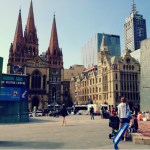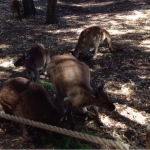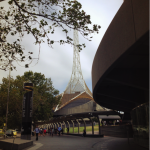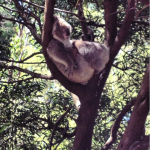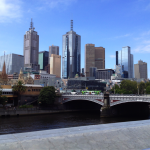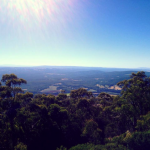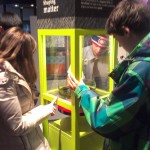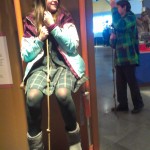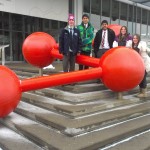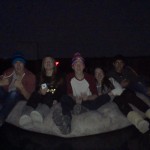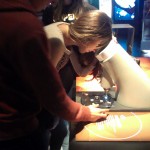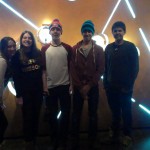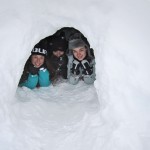 I have been thinking a lot about peace recently. Last Monday I attended a special breakfast at Montreal City Hall to commemorate Martin Luther King Day – a true champion of peace. Over the holiday season, we tend to be more reflective and focused on inner peace. Whether one is religious or not, the December break comes with a broad societal focus on joy, hope, calm and peace.
I have been thinking a lot about peace recently. Last Monday I attended a special breakfast at Montreal City Hall to commemorate Martin Luther King Day – a true champion of peace. Over the holiday season, we tend to be more reflective and focused on inner peace. Whether one is religious or not, the December break comes with a broad societal focus on joy, hope, calm and peace.
What is peace? Is it a value? Is it a state of mind? I have had two experiences which have had a direct impact on my thinking about this question.
First, a few years ago while at a large educational conference in the United States, I attended a seminar offered by Microsoft. The company had decided to invest in establishing a new, modern private high school in an economically-challenged part of a large American city.
As part of the planning, prior to the opening of this new-age Microsoft school, one of the senior administrators explained how she had met with a group of Middle School and grade 9 students from various economically-challenged neighbourhoods. They were put in a room for a couple of hours to discuss what one attribute the new Microsoft school would need to distinguish it from all other schools. The plan was that at the end of the two hours, Bill Gates, billionaire founder of Microsoft, and still its CEO, was going to phone in to speak directly with the students about what they felt that they needed to set up to distinguish their new school. The Microsoft facilitator believed the students might want laptops for all students, or a state-of-the-art digital media lab with all the latest in hardware and Microsoft software. Not at all. When the two hours were up, the kids were unanimous in their wish. It was neither expensive nor outrageous. All they wanted was a guarantee that they could all be safe in the new school. Essentially, the students wanted peace. Those students’ collective wish indicates the importance of peaceful learning communities.
My second experience on the peace front was very tangible and personally profound. Last summer, I was part of an international group of school principals who travelled to investigate “peace education” in Colombia, South America. Colombia is a very unique country – an amazing living laboratory for peace education. Since the early 1950s, it suffered through a period of rather vicious internal discord. Most of it was driven by poverty, political issues, and a violent civil war with radical armed communist guerrilla groups. It was made worse in the 1980s and 90s when the Colombian drug cartels waged an open war with government officials for the control of massive drug revenues from the sale of cocaine. In the mid 1990s those drug cartels were split up and neutralized. In recent years those radical revolutionary political groups have also declared a desire for an end to armed, violent overthrow, and the quest for conflict has been replaced by negotiation, collaboration and peaceful dialogue.
Along the way, the number of deaths of Colombians by violence has been astonishing – estimated at about 220,000 people between the late 50s and 2012, 80% of them innocent civilians. So Colombia is emerging after suffering seriously from a climate of fear and violence.
While in Colombia we visited 15 schools reflecting the complete socioeconomic spectrum. We saw students of privilege in private schools as well as public school students in the poorest slums/favellas in several major cities. We saw two rural schools, an arts school and a remote mountaintop indigenous native community with a school working to preserve the identity and customs of its people, the Cogi tribe.
In the context of Colombia, whose modern history has been so violent, leaders and educators are now turning to peace education in schools as a tool for producing a new generation of empathetic citizens who will create new habits-of-mind focused on trust, respect and cooperation.
In a country working to transcend decades of violence, Colombians are actively trying to achieve peace by treaty, by collaboration and by restorative processes. While there, I learned a lot from them; how important it is to be positive and intentional about building peace. In Colombia this shift is specifically centered in schools as important agents of change. Colombians are banking on the benefits of teaching peace as a core value at all levels: primary, secondary and college.
I had the opportunity to meet with many teenage student leaders who proudly told me that they were active peace agents. In different schools they even wore T-shirts and jackets that identified them as such. That image and those conversations remain strongly imprinted on my memory. I commend the students, teachers and educational administrators in Colombia who are embodying the philosophy of positive collaboration to build a better future.
There may be no single pathway to peace in any society, but for peace to be a reality, the establishment of norms, and standards begin in schools. I thank those I met in Colombia for teaching me about the power of positive human resolve under extreme conditions. My experience also reminded me that we cannot take peace for granted in Canada. We live in Montreal—a culturally diverse city—and more than ever we must each be open to, and curious about, difference. We must be empathetic and respectful of one another to truly become global citizens. At this moment in Quebec, we are facing some notable challenges on this front. But like the impressive students I met in Colombia we must also be respectful and intentional about building a peaceful community, especially when encountering perspectives we disagree with. Remember, we should never take peace for granted. – Christopher Shannon, Headmaster
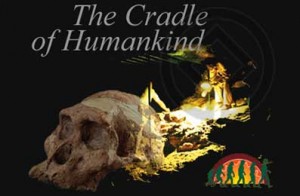 I can’t believe I am actually here, it feels like just yesterday I was filling out what seemed to be the endless exchange application form and forcing my mom to make up mock interview questions. But I am now really here, halfway across the world in South Africa! I didn’t really know what to expect when I was told I was going to Africa, the first thoughts that came to mind were grass huts and lions. But I arrived to find something very different; I arrived to find civilization similar to the one I know so well but different in so many ways.
I can’t believe I am actually here, it feels like just yesterday I was filling out what seemed to be the endless exchange application form and forcing my mom to make up mock interview questions. But I am now really here, halfway across the world in South Africa! I didn’t really know what to expect when I was told I was going to Africa, the first thoughts that came to mind were grass huts and lions. But I arrived to find something very different; I arrived to find civilization similar to the one I know so well but different in so many ways.
